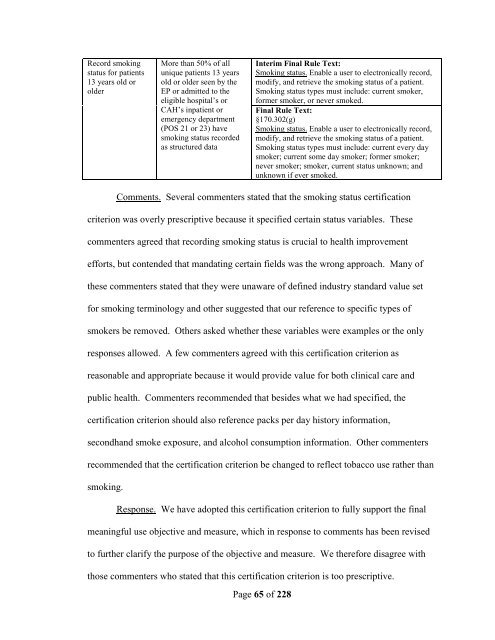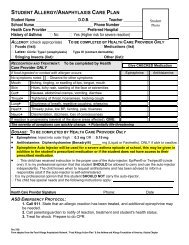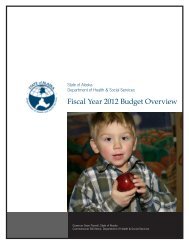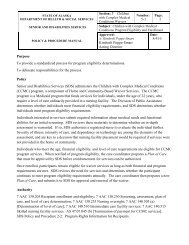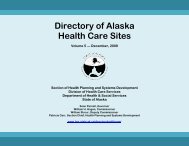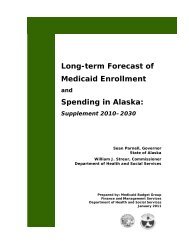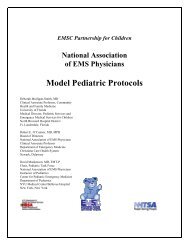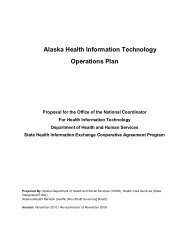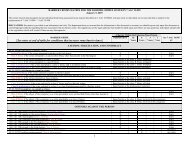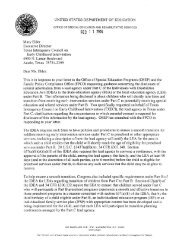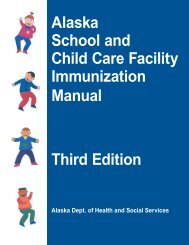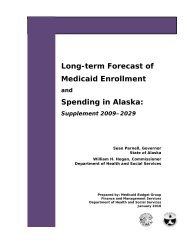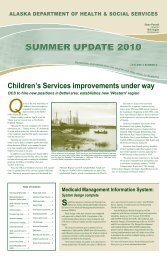ehr onc final certification - Department of Health Care Services
ehr onc final certification - Department of Health Care Services
ehr onc final certification - Department of Health Care Services
You also want an ePaper? Increase the reach of your titles
YUMPU automatically turns print PDFs into web optimized ePapers that Google loves.
Record smoking<br />
status for patients<br />
13 years old or<br />
older<br />
More than 50% <strong>of</strong> all<br />
unique patients 13 years<br />
old or older seen by the<br />
EP or admitted to the<br />
eligible hospital’s or<br />
CAH’s inpatient or<br />
emergency department<br />
(POS 21 or 23) have<br />
smoking status recorded<br />
as structured data<br />
Interim Final Rule Text:<br />
Smoking status. Enable a user to electronically record,<br />
modify, and retrieve the smoking status <strong>of</strong> a patient.<br />
Smoking status types must include: current smoker,<br />
former smoker, or never smoked.<br />
Final Rule Text:<br />
§170.302(g)<br />
Smoking status. Enable a user to electronically record,<br />
modify, and retrieve the smoking status <strong>of</strong> a patient.<br />
Smoking status types must include: current every day<br />
smoker; current some day smoker; former smoker;<br />
never smoker; smoker, current status unknown; and<br />
unknown if ever smoked.<br />
Comments. Several commenters stated that the smoking status <strong>certification</strong><br />
criterion was overly prescriptive because it specified certain status variables. These<br />
commenters agreed that recording smoking status is crucial to health improvement<br />
efforts, but contended that mandating certain fields was the wrong approach. Many <strong>of</strong><br />
these commenters stated that they were unaware <strong>of</strong> defined industry standard value set<br />
for smoking terminology and other suggested that our reference to specific types <strong>of</strong><br />
smokers be removed. Others asked whether these variables were examples or the only<br />
responses allowed. A few commenters agreed with this <strong>certification</strong> criterion as<br />
reasonable and appropriate because it would provide value for both clinical care and<br />
public health. Commenters recommended that besides what we had specified, the<br />
<strong>certification</strong> criterion should also reference packs per day history information,<br />
secondhand smoke exposure, and alcohol consumption information. Other commenters<br />
recommended that the <strong>certification</strong> criterion be changed to reflect tobacco use rather than<br />
smoking.<br />
Response. We have adopted this <strong>certification</strong> criterion to fully support the <strong>final</strong><br />
meaningful use objective and measure, which in response to comments has been revised<br />
to further clarify the purpose <strong>of</strong> the objective and measure. We therefore disagree with<br />
those commenters who stated that this <strong>certification</strong> criterion is too prescriptive.<br />
Page 65 <strong>of</strong> 228


